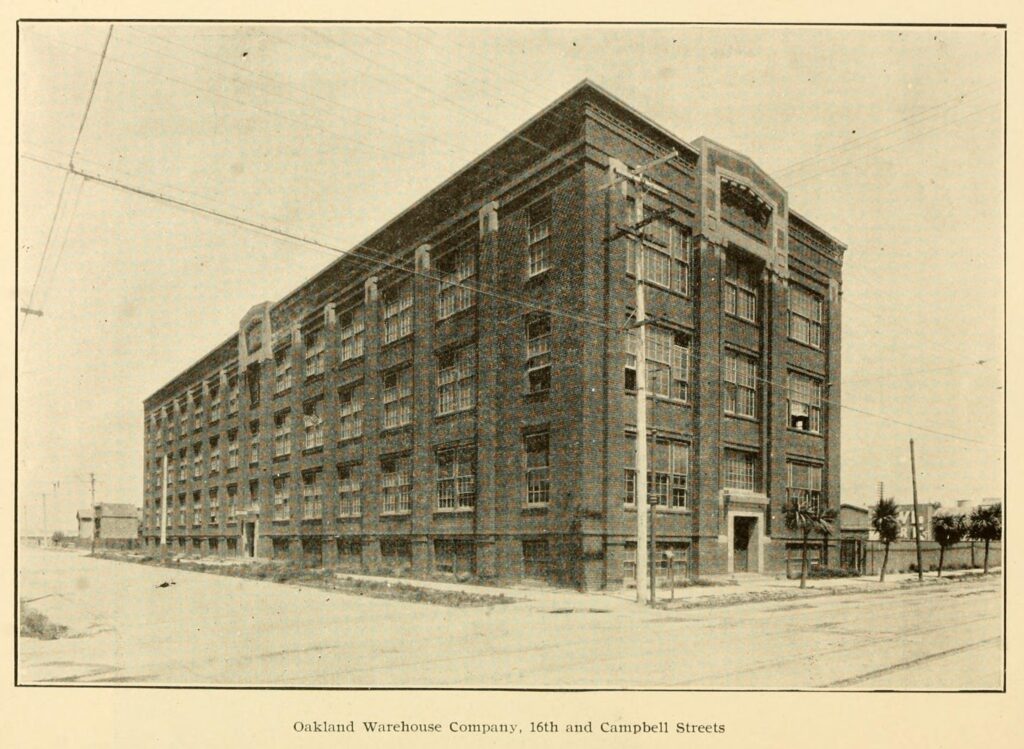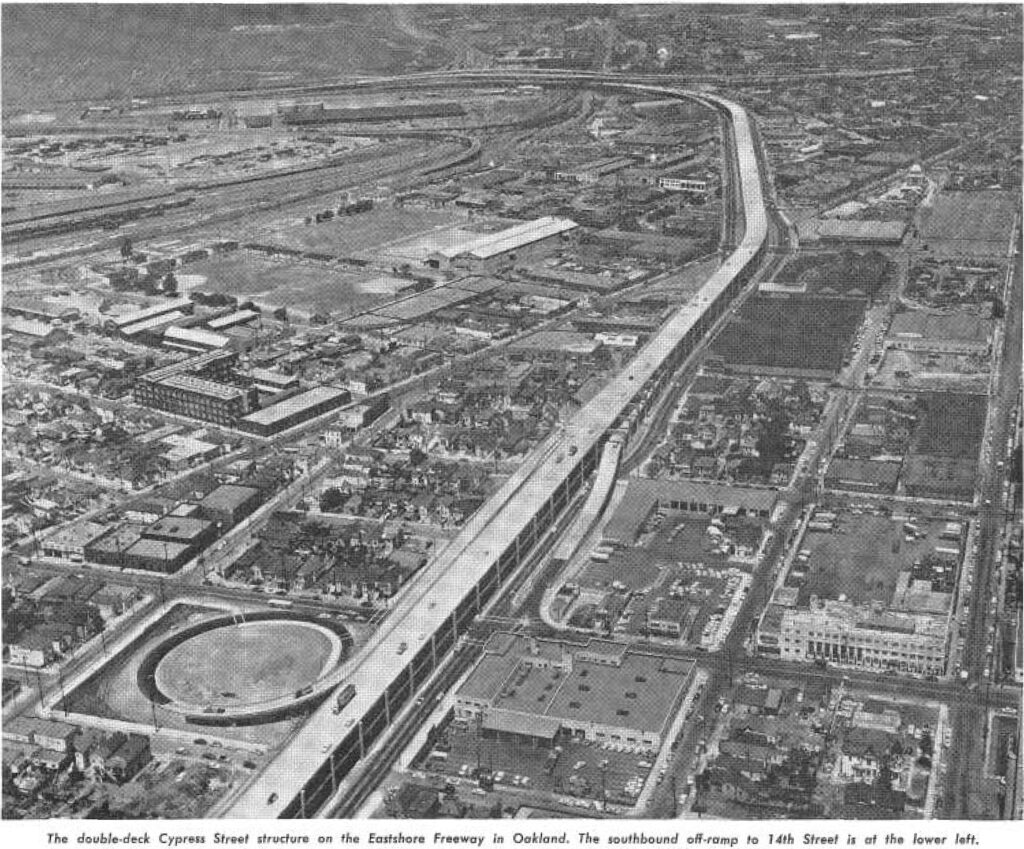Lampwork Lofts

The Lampwork Lofts are a good illustration of one arc of West Oakland history, the changing mix of residential and industrial uses.
Early maps show the areas north and west of here as marshy ground, though some show a hopeful continuation of the street grid not only through the marsh but out into the bay well beyond where the railroad tracks ran.
The 1902 Sanborn insurance maps show numerous homes and some small businesses in the area, but most of this block was empty. So when the Oakland Warehouse Company needed more room in 1910, this block was a good choice. (Despite the name, the Oakland Warehouse Company manufactured light bulbs.)
By 1912, the plant was owned by General Electric for manufacturing Mazda light bulbs. They made much of how well they treated their 250 employees, many of who were young women chosen for the delicate assembly of the bulbs. The neighborhood was changing, and the 1912 Sanborn maps show more industrial uses like a sheet metal plant and a paint factory in the surrounding blocks in addition to the lamp works.
Demand for light bulbs was growing, so in 1917 General Electric applied for a permit to double the size of the plant and built the wing along 16th Street.
Industry in West Oakland continued to grow over the years, peaking around WWII. The 1951 Sanborn maps show various industries in the area, including numerous warehouses and the Herrick Iron Works.

But the 1950s also brought something new—freeways. The Cypress Freeway was built in 1957 just a few blocks east of here. It cut this area off from the rest of Oakland, and made this semi-industrial area less desirable for housing. But freeways also opened up more distant locations like Fremont for manufacturing, motivating some industries to move.
After the lamp works closed, the building was used for other industries, including the California Cotton Mills (better known for their East Oakland location) to manufacture mops, and Portco Corporation to manufacture plastic bags.
The neighborhood continued to change, most notably in 1989 when the Loma Prieta earthquake caused the Cypress Freeway to collapse. Caltrans wanted to rebuild it in the same place, but locals fought back, and eventually got them to reroute the freeway further west.
The lamp works building sat empty for some years, and an attempt to rehabilitate it in early 2000s was stalled by a recession. Eventually those plans moved forward, and today it is 92 market rate lofts.